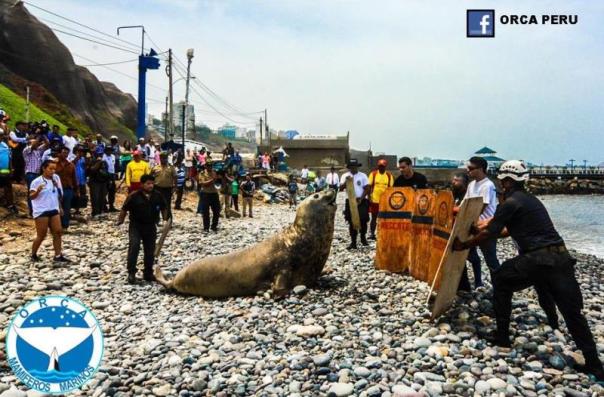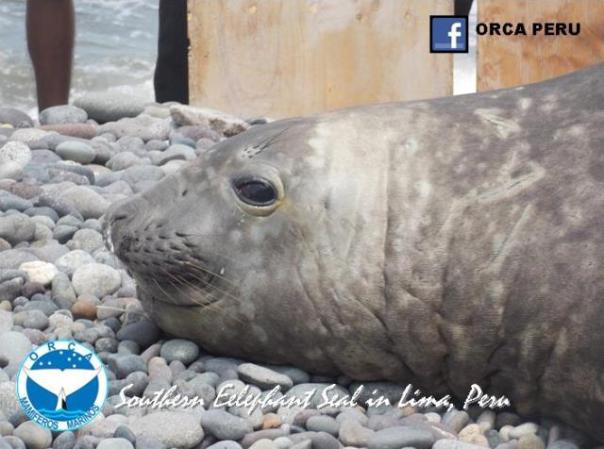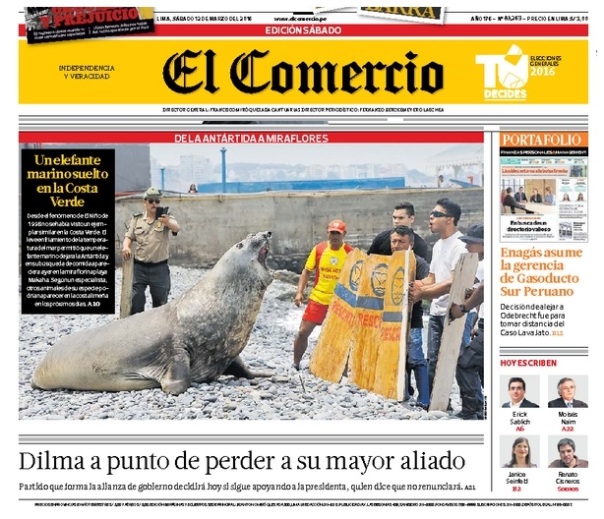“Sam! Tenemos un ELEFANTE MARINO!”…Marine elephant? What?! At that moment, I knew it was going to be an eventful day. This morning, our phone would not stop ringing. It seemed like all of Lima was trying to reach us! We quickly prepared the medical kit, grabbed the rescue boards, and headed to the beach!

When we arrived at the scene, we were immediately swarmed by a mob of reporters, police officers, government officials, local fishermen, and confused surfers, who were all wondering what the heck was going on. If sea-lions strand all the time along the coast, why was everyone making such a big deal over this? That was because what we had in front of us was a Southern Elephant Seal (Mirounga leonina), the largest living carnivore in the world! This specific individual was a juvenile male (not even close to fully grown) who was a long way from home. It was very unusual to see an Elephant Seal in Peru – in fact, Dr. Yaipén-Llanos had only ever spotted one other in Peru in his 15 years of working in this field. These guys usually live much further south (Patagonia, Argentina), with their main feeding area being the edge of the Antarctic.

We did a visual assessment and noticed that he had white foam coming out of his nostrils and Seal Pox around his face. These were signs of possible Pneumonia and immune suppression, usually linked to Distemper Virus (a mutation of Canine Distemper Virus). Since the seal was way too big to restrain and bring back to the rescue center, we had to devise a plan to treat him on-site. We gathered the rescue team and instructed them to create a barrier with the rescue boards, to prevent the seal from entering the water, while Dr. Yaipén-Llanos and I attempted to administer treatment. We managed to inject him with antibiotics before he broke through the barrier and went off into the ocean. Truthfully, there was not much more we could do to help him. There are many factors that could have contributed to his immune system suppression, with pollution being one of them, without a doubt.

While we still had the attention of the public, Dr. Yaipén-Llanos took this opportunity to educate them – after all, education is the key to conservation! With the drastic change in climate we’ve been experiencing recently (also known as El Niño), many strange things have been occurring world-wide; abnormal water temperatures, sightings of species in areas where they normally are never spotted, and lack of species in areas where they usually thrive this time of year.

Climate change is real and animals are the ones getting hit the hardest. We all have the responsibility to educate ourselves and be conscious citizens of this planet! The news went worldwide, and locally, it had an impact enough to make it to the front page, always to remember!

Written by Samantha Lam, ORCA Intern from Canada, Summer, March 2016.